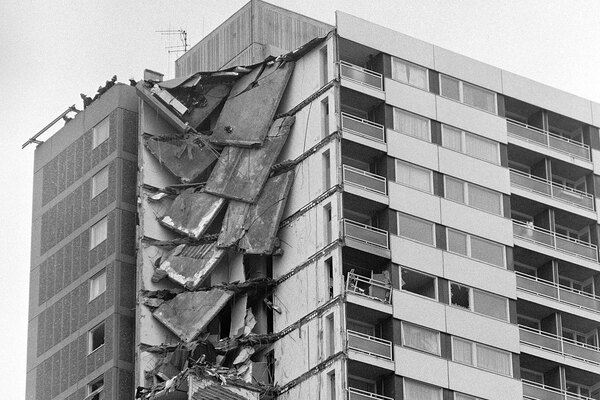Barton House: council was aware of ‘structural’ issues more than a year before evacuation
Bristol City Council had been told in a surveyor’s report about structural issues at Barton House 15 months before the tower block was evacuated, it has emerged.
Around 400 residents of the 98-flat block were forced to leave last November after a survey found “major structural faults”.
But the council had previously received a report in August 2022 which flagged “structural issues” at Barton House, it revealed in response to a written question tabled last month.
“On receipt of the report, Bristol officers determined that the risks presented could be mitigated,” the council said in its response.
“Indeed, at the time there were already mitigations in place, including no piped gas supply to flats and a waking watch in place.”
However, the council said in November 2023 that the report was peer-reviewed by consultancy firm Arup, which “significantly escalated the structural risks at Barton House”.
Following the evacuation in November, residents were offered accommodation at a Holiday Inn in Bristol city centre, while others have reportedly been staying with family and friends.
On the original report, Bristol City Council said it had commissioned a survey of the block after a letter from the government in 2017 about the safety of large-panel system (LPS) buildings.
In its response, the council said Barton House is not an “LPS building” but is an “LPS-type building” with panels on the outside.
LPS was a construction method mainly used in the 1960s and 1970s in which residential blocks were built using large, prefabricated concrete slabs. In 1968, east London tower block Ronan Point, an LPS building, partly collapsed two months after it opened following a gas explosion, killing four people and injuring 17 others.
In 2017, the then Department for Communities and Local Government wrote to all housing associations and councils about LPS buildings.
Bristol City Council said in its response: “We remain in conversation with government about their 2017 letter and the actions taken since.
“Different kinds of surveys have been undertaken at Barton House and other high-rise blocks since that time, with the information on each acted on to deliver improvements where necessary.”
In another question submitted to the council last month, it said Barton House residents were unhappy with how they are being treated. “This council has been terrible at providing them information, and has repeatedly chosen to keep information secret rather than publish it,” it said in the text of the question.
In an emailed response today to Inside Housing, a Bristol City Council spokesperson said: “Since the Barton House evacuation on 14 November we have been in regular communication with Barton House residents and we continue to update tenants first on any developments.
“Once we have received the final reports, we will share all of the reports and further information together with Barton House residents first before publishing them online.”
Last month the city’s mayor, Marvin Rees, said he expected the block’s residents to be able to move back in by 23 February as remediation work was happening “at pace”.
Sign up for our asset management newsletter
Already have an account? Click here to manage your newsletters











